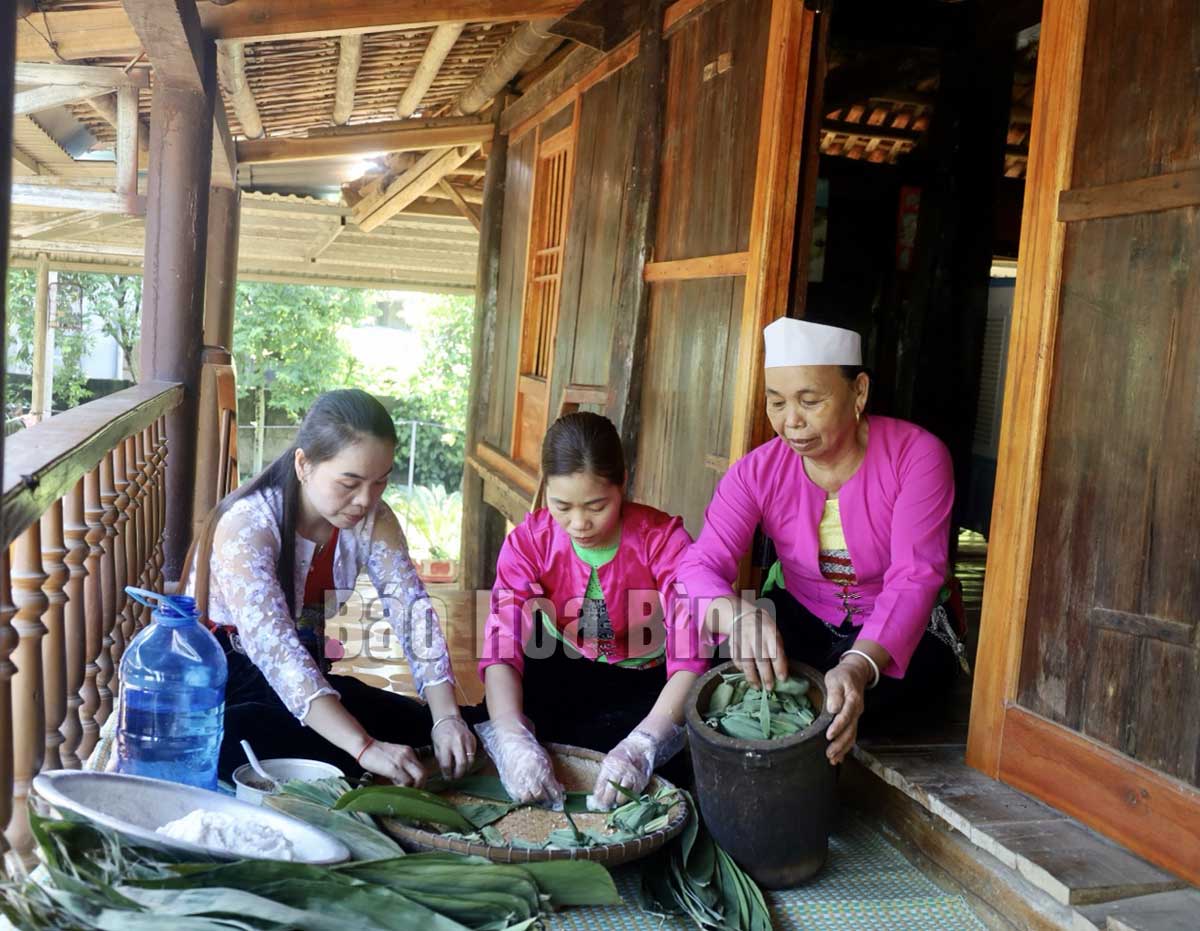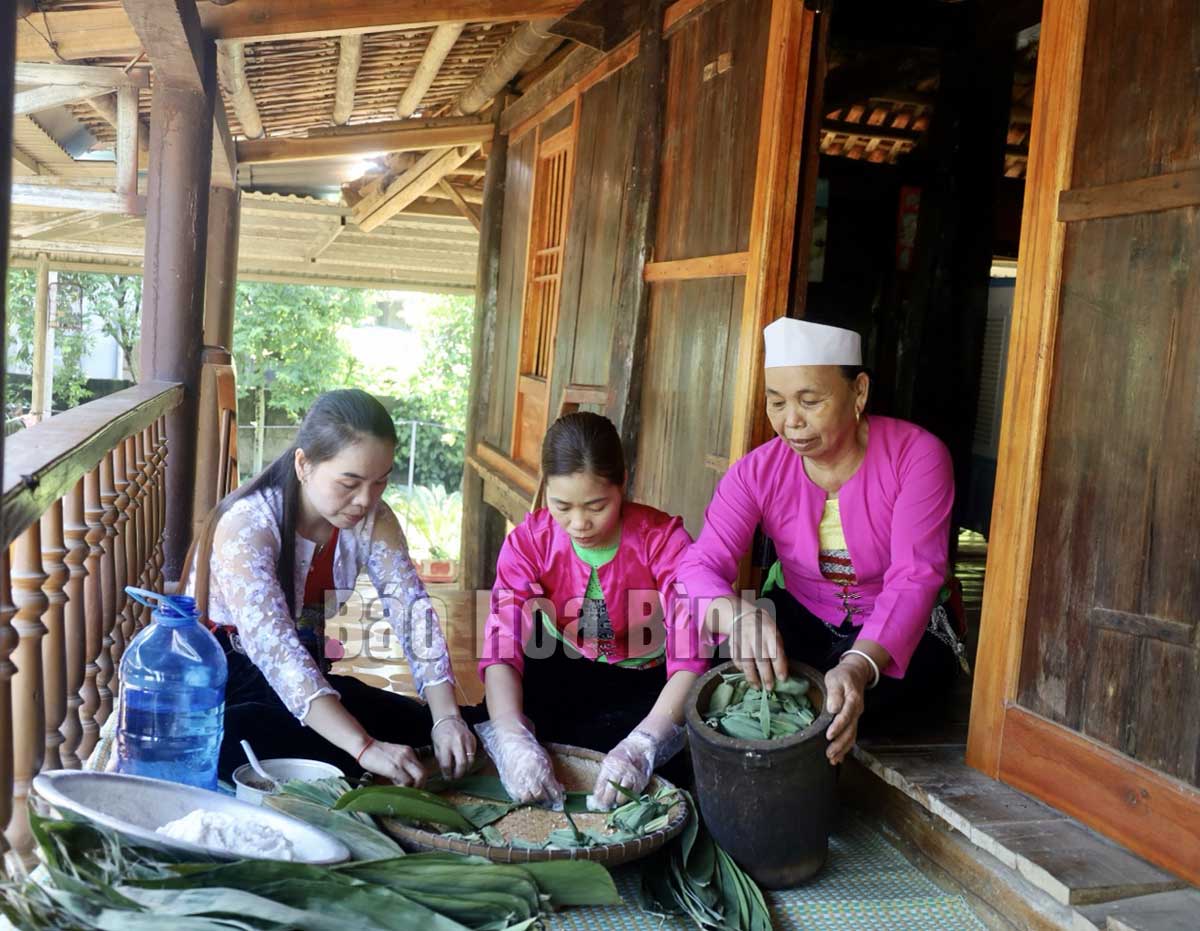
(HBO) - People across Lac Son district celebrate the country’s National Day on September 2 each year. The atmosphere on the day is vibrant as since early morning, sporting and culture-art activities take place in all villages of Muong Van and Muong Khoi. All family members gather together drinking corn wine and people wear their best clothes to visit each other’s house.
Photo: People in Muong Vo (Lac Son) bake
"uoi” cake on the National Day.
This year, however, the celebrations were scaled down amid the complexities of
COVID-19, in an effort to protect public health and prevent the virus from
spreading.
Even so, all families meticulously prepared food trays to pay tribute to their
ancestors and late President Ho Chi Minh, wishing for health, happiness,
prosperity and peace for their children, the family, the village and the
country.
The National Day celebration in the locality has its roots in the Cong Hoa area
in Muong Vang, said Bui Van Thuom of Vo Tren village of Nhan Nghia commune.
Along with changes in Muong Vang, the scale of National Day celebration has
expanded and it is viewed nearly as grand as the country’s Lunar New Year (Tet)
festival.
Due to the pandemic, the celebration was scaled down to family-sized this year,
unlike in previous years when families usually invite relatives and guests from
other areas to join the celebration, Thuom said.
Vice Chairman of the People’s Committee of the district Bui Van Duong said that
the National Day celebration has become a traditional practice which honours
contributions by the predecessors, the Party, President Ho Chi Minh and soldiers
and martyrs who fought for the country’s independence and freedom.
Upholding the tradition has helped conserve and promote the local cultural
characteristics amongst local people and tourists, fostering exchanges,
integration and socio-economic development and ensuring national
defence-security, he added./.
With an increasingly vibrant and widespread emulation movement aimed at building cultured residential areas and cultured families, Yen Thuy District has been making steady progress toward improving both the material and spiritual well-being of its people, while fostering a civilized, prosperous, beautiful, and progressive community.
Once lacking recreational spaces and community facilities, Residential Group 2 in Quynh Lam Ward (Hoa Binh City) has recently received attention for the construction of a new, spacious, and fully equipped cultural house. The project followed the model of state support combined with public contributions in both labor and funding.
The "All people unite to build cultural life" movement, which has been effectively integrated with Kim Boi district’s socio-economic development goals, is fostering a lively spirit of emulation across local residential areas, hamlets, villages, public agencies, and enterprises. In addition, through the initiative, traditional cultural values are being preserved and promoted, while community solidarity and mutual support in poverty reduction and economic development are being strengthened.
A working delegation of the Hoa Binh provincial People’s Committee led by its Permanent Vice Chairman Nguyen Van Toan on June 11 inspected the progress of a project to build the Mo Muong Cultural Heritage Conservation Space linked to tourism services in Hop Phong commune, Cao Phong district.
Born and growing in the heroic land of Muong Dong, Dinh Thi Kieu Dung, a resident in Bo town of Kim Boi district, in her childhood was nurtured by the sweet lullabies of her grandmother and mother. These melodies deeply imprinted on her soul, becoming an inseparable part of her love for her ethnic group's culture. For over 20 years, this love for her hometown has driven Dung to research, collect, and pass down the cultural values of the Muong people to future generations.
In the final days of May, the Ethnic Art Troupe of Hoa Binh Province organized performances to serve the people in remote, mountainous, and particularly disadvantaged areas within the province. These were not just ordinary artistic shows, but they were the meaningful journeys aimed at spreading cultural values, enhancing the spiritual life of the people and contributing to the preservation of ethnic minority cultural identities.



